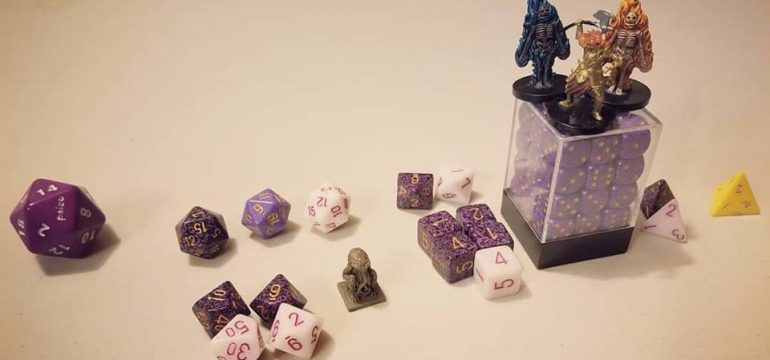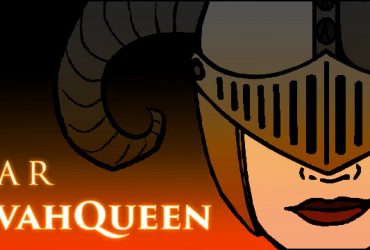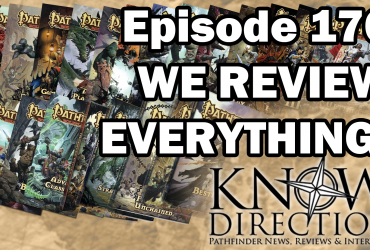I have declared on the podcast on a number of occasions that making players roll their damage dice with their to-hit dice to save time is the worst commonly given advice to GMs. However, before today, I haven’t articulated why.
What might not be obvious is that I am not objecting to players or GMs rolling to-hit and damage dice together. I have said about how the seconds theoretically gained from one set of die rolls instead of two individual die rolls are lost to the “Oh man, I missed? But I rolled max damage!” outbursts in my experience, but that’s more rant than argument. If I am GMing a table where a player prefers that method, I won’t stop them. However, if a GM asks me to roll to-hit and damage dice together, I will calmly but directly say “I will if you insist but please don’t insist. I promise not to take longer turns than any other player.”
In the above picture, you see how I set my dice up at the gaming table as soon as I sit down. I do this quickly and unconsciously, and can carry on complex conversations or roleplay in character while I am doing it. This is the evolution of over a decade of maintaining a contained and orderly area for my dice on a table where space is a premium.
You might have noticed there is one purple d20 (non-Paizo variety) that is a different colour from the other dice in the set. This is extremely important. I tend to play warriors, so I am used to having multiple attacks in a turn. Regardless of the character I am playing, when I have to roll more than one of the same dice, the darker the die, the higher the bonus. For if I have three attacks with +15/+10/+5 to my attacks, the dark purple d20 gets +15 and the white d20 gets +5. Like when I set my dice up, this has become instinctive to me.
I am faster with my instincts than I am with my thoughts. If a GM insists I roll my dice any way other than what I am comfortable with, they are asking me to think instead of operate on instincts. That means they are getting slower turns from me to the detriment of everyone at the table.
A non-gaming examples for broader context:
Tina and I had an argument about the laundry. There were two baskets of clean clothes on the kitchen table, one full to overflowing, one half full. I decided to bring them upstairs. But first, I though, I would level out the uneven baskets. Or so I thought! The top layer of the overflowing basket was particularly long items to be hung, which she’d tucked under the middle layer for stability. I only discovered this by effectively unfolding the upper half of the overflowing basket. When Tina saw what I was doing, she immediately told me to stop, asking Abigail “why does Daddy do these things?” Abigail is 5 months old and can, at best, babble so I suspect the comment was intended for me. So why did I do it? Because I didn’t give Tina the benefit of the doubt that there was indeed logic behind what seemed illogical to me. We were both slightly worse off because of it.
My objection isn’t to making players to roll their damage dice with their to-hit dice isn’t about how anyone rolls dice, it’s about making players do something for minimal potential reward at best. I’ve said in the past that my most important aspect of a roleplaying game is immersion. GMs should do everything in their power to make players comfortable at the table so they can forget that they are at a table. If a player is breaking the rules or hogging the spotlight, step in, absolutely. But nitpicking the minutia of how a player rolls their dice just makes a player more aware of their dice and less immersed with what those dice are there for.







I definitely agree that you should not be “nitpicking the minutia of how a player rolls their dice.” However, there are some time-saving, confusion eliminating techniques experienced players should pass on.
While I prefer rolling the dice all together, I don’t really care how others do it. However, I think it’s important to ensure players have enough dice to cover their damage roll in one fell swoop. If players are blasting a fireball and having to roll the two six sided dice they own three times for their 6th level wizard, or rolling their one D4 five times for burning hands, that is an unnecessary delay, and fraught with potential error.
Further, color-coding dice to damage type also aids in 1) speeding the game up a little, and 2) making it easy to determine what damage came from what source (if there’s DR involved or something.)
For my 9th level stereotypical magus I roll a black d6 for the slashing weapon damage (matches my black d20 I rolled to hit), a red d6 for the fire property, and 9 yellow d6 for the electricity damage. If I crit, then I’ll roll another d10 for the Fire Burst damage (As well as the whole wad minus fire again.) Not only is this very clear what is happening, easy to add up (because it’s not multiple rolls of a limited supply of D6), but also, just a FUN roll… dropping 12 dice at once!
Any player should know what their character may need… or at the very least, typically need, and have those dice on hand. All too often I see people asking others for dice, or just reaching out to take them… in PFS games at cons, as well as in my home games… where I’ve supplied everyone with tons of dice!
I love your trick of shade-coding your dice with the higher iterative attack being the darker dice.
In my magus example, I could still roll the black d20, and matching d6, and for the second attack a lighter d20 and a matching D6… I could still roll the shocking grasp 9d6 damage at the same time. If the first attack misses, the second attack gets the shocking grasp damage if it hits… if both attacks hit, the shocking grasp damage goes to the first roll and I’ve already rolled the weapon damage for the second hit. I never yell, “BUT IT WOULD HAVE BEEN MAX DAMAGE”… it’s just so many dice to bother looking at if it’s a miss.
Great article, and thanks for the explanation of why you don’t roll attack and damage together.
Similar rules apply if you’re the DM and don’t have one “character” to know the best dice combinations for. Basically have enough of each type of dice, and using PKCGames technique of color coding dice by dice-type for quickly finding what you need.